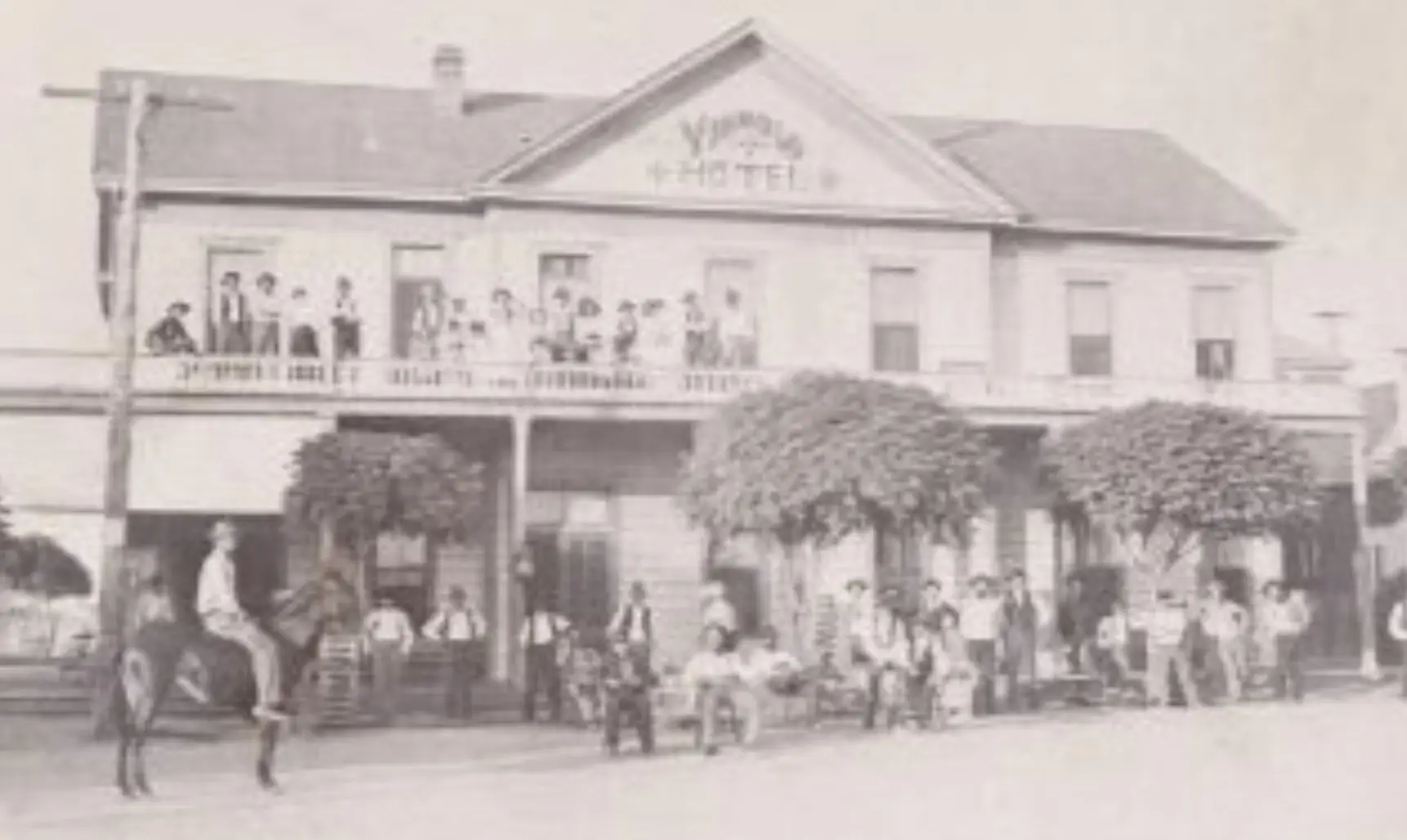The appearance of big game on the floor of the San Joaquin Valley was not an unusual sight during the 19th century. Bear, mountain lions, deer, and antelope were often found along the waterways that coursed across the plains.
By the turn of the century, however, only the ubiquitous jackrabbit was left. Civilization had eliminated the herds of antelope and had driven the deer, bear, and California lions back to their mountain habitats. Memories of the free-running wildlife in and around Madera had faded, and by 1903, one could reasonably expect to be able to lie down under the eucalyptus trees outside of town and not be bothered by “panthers,” at least so thought one man.
C. Bradley was known to Maderans as a ‘’tramper.” He had trouble hanging on to long-term employment. The temperature was rising quickly on that day in early May, and Bradley, who had been without luck in finding a job, spotted the grove of trees that stood south of the Berenda depot. This seemed like the perfect refuge from the toil of searching for work, so the young man nestled up around the trunk of one of the trees and fell asleep.
At 2 p.m., the Southern Pacific passenger train came steaming into Berenda and woke Bradley. As the man sat up and opened his eyes, he was astonished at what he saw: a huge mountain lion was just a short distance from him and moving in his direction.
Bradley jumped up, grabbed a handful of stones, and began to pelt the animal, which in turn growled, bared its teeth, and jumped up into one of the trees. Relinquishing possession of the eucalyptus refuge, Bradley ran to the nearby Vignolo Hotel where he found several men conversing on the porch. As he strained to relate the events of the past few moments, the patrons of the hotel were tempted to pass Bradley off as a lunatic. No one could remember a mountain lion ever having made its way to Berenda before. Three of the group, however, decided to have a look before dismissing the story as the product of an overwrought mind.
B.T. and John Vignolo, along with S.S. Anderson, followed Bradley back to the eucalyptus grove. Sure enough, there in the trees was the huge mountain lion. Anderson, who was carrying his shotgun with him, took aim and fired. The animal fell to the ground. The big cat measured eight feet from the nose to the tip of the tail and weighed 200 pounds. Anderson loaded the carcass onto his wagon and proceeded to Madera. He was going to save this moment for posterity. Making his way to the photographic gallery on D Street, Anderson had his picture taken with his prize. Within a short time, a large crowd of Maderans gathered around the shop to catch a glimpse of the animal.
Speculation as to the reason for the lion’s presence in Berenda began to run rampant. One observer noted the animal’s coat did not appear as tawny as those normally seen in the mountains. This led to the conjecture that the animal had recently escaped from captivity, perhaps from the circus that had recently passed through town.
Another of the local wags proffered the suggestion that someone was planning a surprise for President Roosevelt when he arrived at Berenda a few days hence, on his way to Yosemite. It was reasoned since it was a well-known fact the President relished the thrill of a big game hunt, Madera County would accommodate him by providing the prey.
Others in the crowd, however, rejected this hypothesis as pure balderdash, asserting the lion had simply followed the sheep down from the mountains. This guess was soon put to rest though, when it was pointed out that the sheep at the present time were moving toward the mountains, not away from them. In the end, no one could offer a completely acceptable explanation for the presence of a mountain lion in Berenda. What was established, however, was the fact that in bygone days the presence of wildlife in Madera was more the rule than the exception.
Memories were stimulated; stories proliferated. It was recalled that in 1876, a huge herd of antelope had been seen crossing the railroad tracks near the Fresno River. Someone remembered that James Kenney had come very near to losing his life in a personal encounter with a bear in the early 1870s. In 1886 there had been the much-publicized “lion drive” on the Tuolumne River to rout out the lions that had been nesting there. As recently as 1899, James Brusie had shot a lion that his dogs had cornered north of the Chowchilla River.
Out of all of the hubbub came the realization that no matter how Anderson’s lion got to Berenda, there had once been a time when big game roamed unmolested along the rivers of what is now Madera County. In 1903, the area was not that far removed from the pristine environment that had once nurtured nature’s wildlife. S.S. Anderson’s mountain lion, stuffed and on display in Madera, poignantly brought the point home.
Originally published in the Madera Tribune




